What is the Tragic Origin of “No Animals Were Harmed in the Making of This Film?”
Here is the latest in a series of examinations into urban legends about movies and whether they are true or false. Click here to view an archive of the movie urban legends featured so far.
MOVIE URBAN LEGEND: A film that pushed a horse off of a cliff led to the film industry allowing the American Humane Association oversight over treatment of animals in films.
Any regular filmgoer is familiar with the tag at the end of film credits that states “no animals were harmed in the making of this film. This message is given with the approval of the American Humane Association, which has oversight over the treatment of animals in films (they actually own a trademark on the phrase “No Animals Were Harmed”).

As you might imagine, wherever an organization has oversight over filmmakers (or any private industry), there assuredly was some sort of incident or legal ruling that led to them gaining that oversight. In other words, companies tend not to volunteer to be overseen by an outside group. So how did the filmmakers of the United States come to agree to have their treatment of animals overseen by the American Humane Association? Would you believe that it had to do with a horse being pushed off of a cliff?
As soon as the movie industry really began to take off in the 1920s, the American Humane Association sought oversight over how the industry treated animals in its films. As time went by, they grew more and more insistent, especially as westerns and war films became more and more popular, since both those types of films tended to treat horses as if they were taking part in actual battles.
In particular, the use of trip wires (to tangle horses and show them dropping as if shot by guns or arrows) was protested. However, while there were films where over a dozen horses were killed via this technique (the filming of the 1939 Erroll Flynn film, The Charge of the Light Brigade, saw over two dozen horses killed via trip wires)…
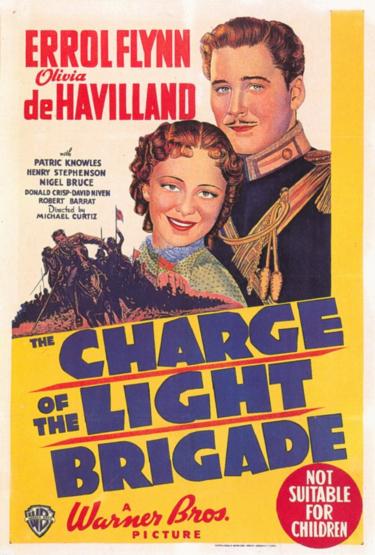
it was the death of a single horse that finally pushed the film industry into allowing the American Humane Association to dictate how animals were treated.
You see, in a 1939 film about Jesse James (starring Tyrone Power as Jesse James and Henry Fonda as his brother, Frank James)…
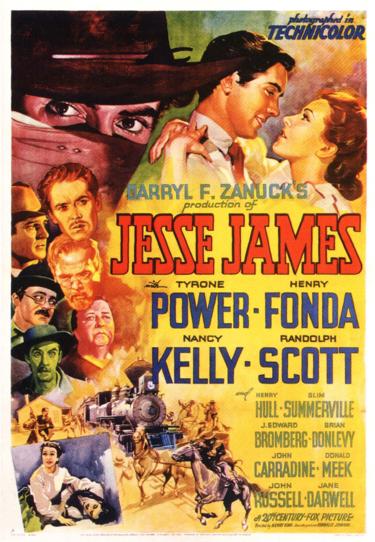
the filmmakers THREW A HORSE OFF OF A CLIFF!!
In a dramatic scene towards the end of the film, Jesse James, Frank and Jesse James are being chased by a posse. Their only way out is to jump from a cliff into a lake with their horses.
Perspective was used to make a 70-foot drop seem taller and then a stunt man jumped off of a cliff along with a horse who was forced off via a slide mechanism.
Here is the scene…
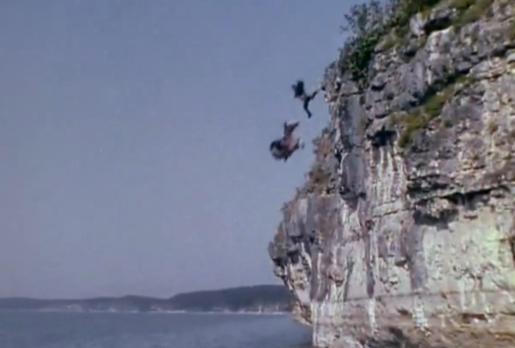

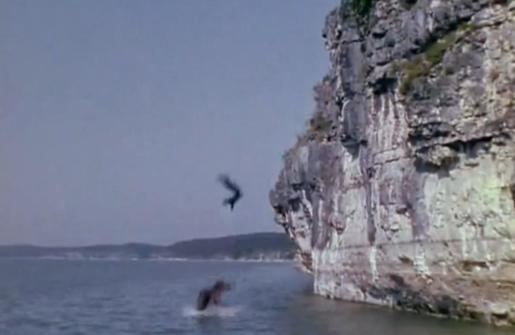
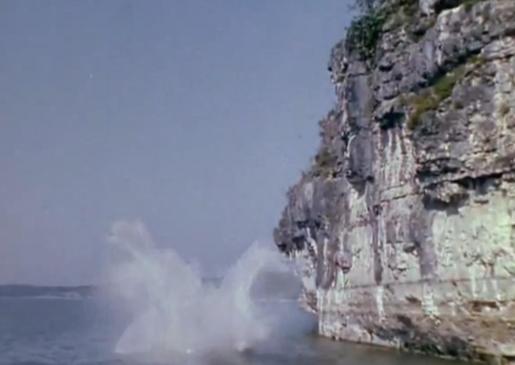
A different angle of the shot was then replayed right after to make it look like the other James brother also jumped with his horse…
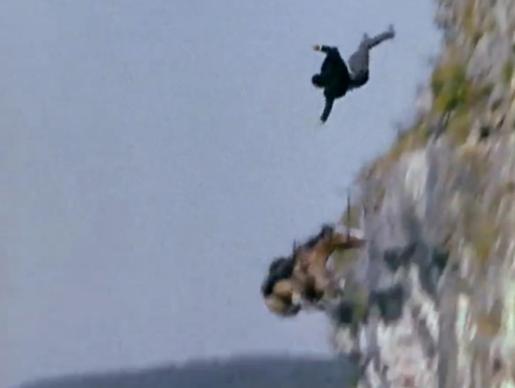
Then we cut to the brothers and their horses in the river getting away…
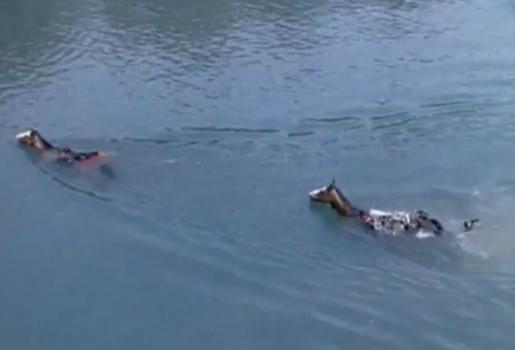
The fall did not actually kill the horse (as, again, the drop was not THAT steep), but the horse was so freaked out by the fall that it began thrashing wildly and ended up drowning itself.
This incident drew a great deal of attention from the public and anger against the filmmakers. It appeared as though the United States Congress was going to be spurred into acting. As we have seen over the years, one of the things private industries are most frightened by is government regulation, so rather than let Congress get involved, the Motion Picture Association of America agreed to allow the American Humane Association to oversee the treatment of animals in their films from that point on.
The American Humane Association Film Unit began in 1940 and thus “No Animals Were Harmed” was born!
In recent years, the American Humane Association has come under fire over a number of films that received the “No Animals Were Harmed” sign-off despite numerous animals dying during the production of the films. For instance, the 2012 film, The Hobbit: An Unexpected Journey saw nearly thirty animals used in the film die off-set. The American Human Association President and CEO Dr. Robin Ganzert commented on the Hobbit incident, stating:
We are currently only empowered to monitor animal actors while they are working on production sets. We do not have either the jurisdiction or funding to extend that oversight to activities or conditions off set or before animals come under our protection. There are too many incidents off the set and this must stop. It is vital that we work with the industry to bring the kind of protection we have for animals during filming to all phases of production.
There is still much debate over the American Humane Association’s current role when it comes to the protection of the rights of animals in films, but whatever your thoughts are on the topic, though, this particular legend is…
STATUS: True
Thanks to Mike Gillespie and his neat website about the history of the Lake of the Ozarks (where the stunt took place) for the information about how the stunt in Jesse James was done.
Feel free (heck, I implore you!) to write in with your suggestions for future installments! My e-mail address is bcronin@legendsrevealed.com.






What about the horses they ran off the cliff edges in beginning of the Billy Jack movie , is why im here seeking input on that , being its very disturbing each time i see film ….